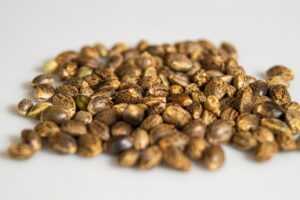This guide provides detailed insights into optimizing your cannabis growth by focusing on creating the best conditions for cannabis seedlings. It demonstrates a comprehensive understanding of the optimal conditions for cannabis seedlings and how to achieve cannabis growth optimization. It’s a must-read for both experienced growers and novices who are keen to learn about the crucial early stages of cannabis growth.
Understanding the Importance of the Seedling Stage: Why is it Crucial?
The seedling stage is a critical phase in the life cycle of cannabis plants. It is during this stage that the foundation for healthy growth and development is established. Proper care and attention given to cannabis seedlings at this early stage can greatly impact their overall success and yield in the future.
First and foremost, the seedling stage is crucial because it sets the stage for the plant’s root development. Healthy roots are essential for nutrient uptake, water absorption, and overall plant stability. By providing the optimal conditions for cannabis seedlings, such as proper temperature, lighting, and soil moisture, you can encourage robust root growth, which in turn leads to stronger and more resilient plants.
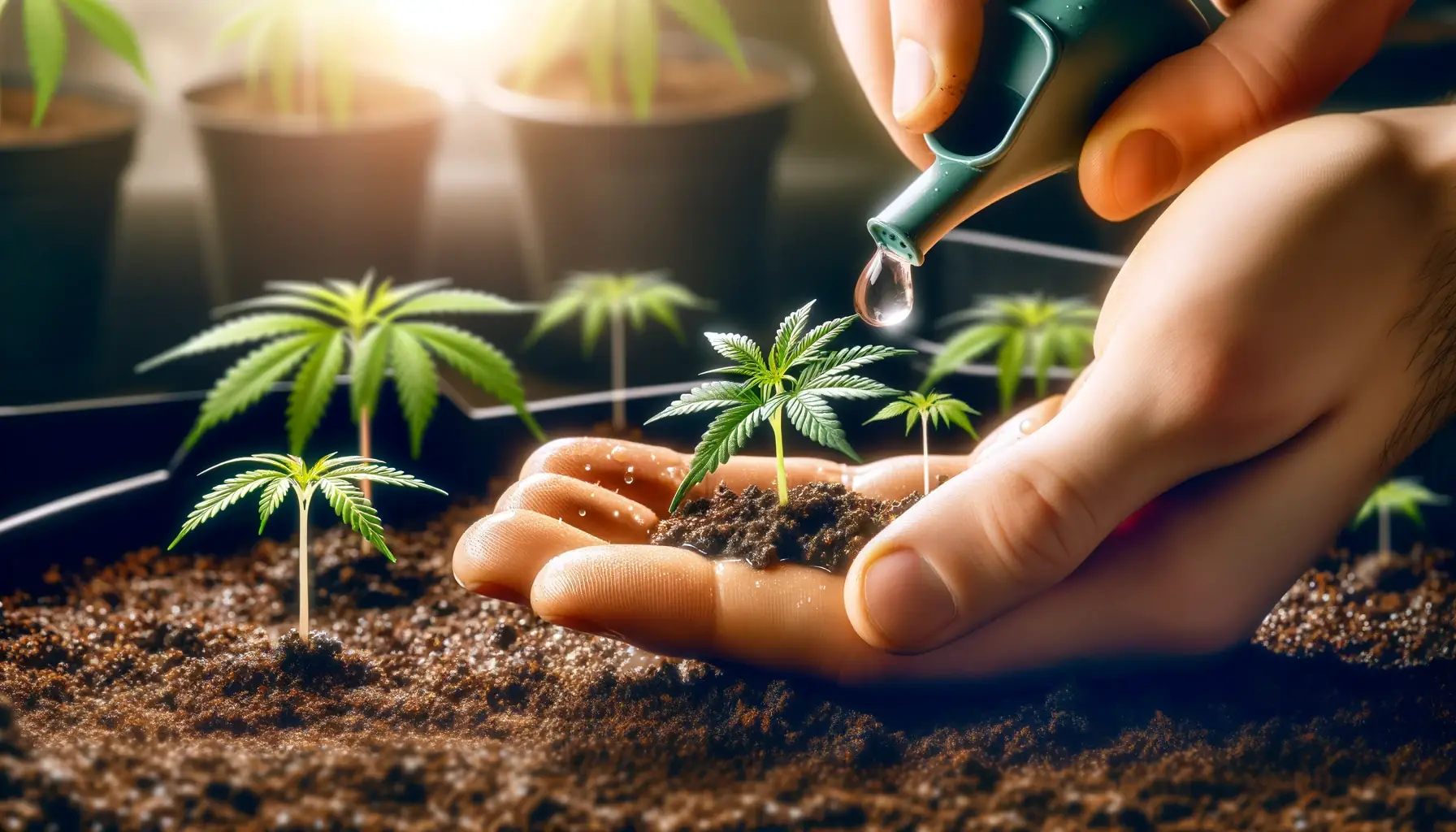
Additionally, the seedling stage is a time when the plant establishes its structure and growth pattern. By ensuring that seedlings receive adequate light, nutrients, and water, you can promote the development of sturdy stems and healthy leaves. This early growth is essential for the plant to establish a strong framework that will support its future growth and ultimately maximize its potential yield.
Furthermore, the seedling stage is crucial for identifying and addressing any potential issues or deficiencies early on. By closely monitoring your seedlings during this stage, you can quickly spot signs of nutrient deficiencies, pests, or diseases. Taking prompt action to address these issues can prevent them from escalating and negatively impacting the overall health and productivity of your cannabis plants.
Finally, the seedling stage is a time of vulnerability for cannabis plants. They are delicate and more susceptible to stress and environmental changes during this phase. By providing the optimal conditions for cannabis seedlings, you can minimize stress factors and create a nurturing environment that allows them to thrive.

Temperature Talk: What’s the Ideal Range for Cannabis Seedlings?
Maintaining the correct temperature is crucial for the successful growth of cannabis seedlings. The ideal temperature range for cannabis seedlings can be broken down into three subheadings:
daytime temperature, nighttime temperature, and temperature differentials.
- Daytime Temperature:
During the daytime, cannabis seedlings thrive in temperatures ranging from 70°F to 80°F (21°C to 27°C). Providing a warm and stable environment helps facilitate proper photosynthesis, nutrient absorption, and overall growth. It is essential to avoid extreme temperature fluctuations, as this can cause stress and hinder the seedlings’ development. - Nighttime Temperature:
Just as the daytime temperature is important, maintaining the right nighttime temperature is equally crucial. Cannabis seedlings prefer a slightly cooler environment during the night to mimic natural outdoor conditions. A nighttime temperature range of 60°F to 70°F (15°C to 21°C) is generally recommended. This temperature drop stimulates root growth, strengthens the plant’s structure, and supports healthy development. - Temperature Differentials:
Temperature differentials refer to the difference between the daytime and nighttime temperatures. A moderate temperature drop of 10°F to 15°F (5°C to 8°C) between day and night is beneficial for cannabis seedlings. This differential helps regulate the plant’s metabolic processes, encourages strong root growth, and enhances overall resilience.
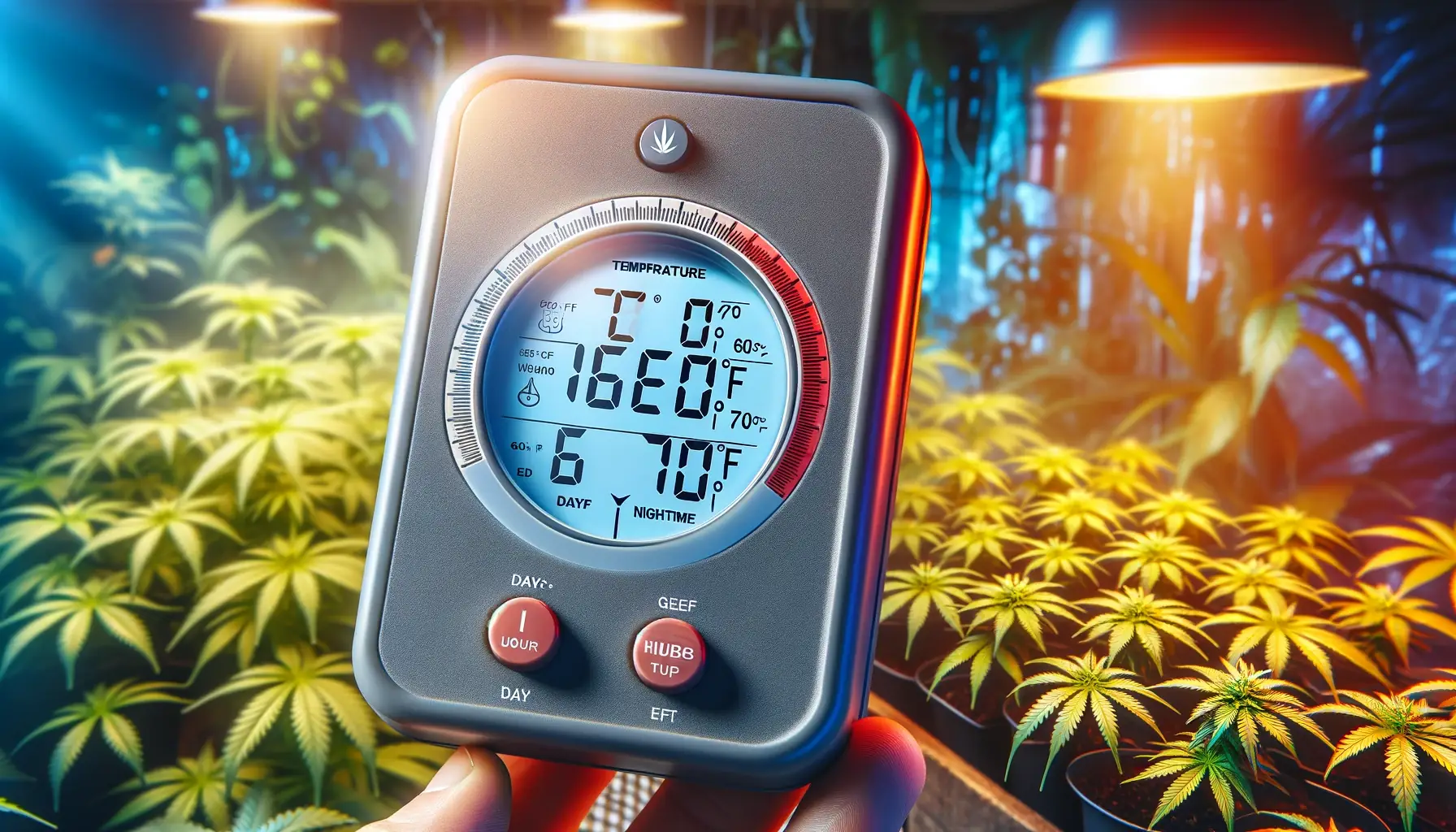
Lighting and Cannabis Seedlings: How Much is Too Much?
Proper lighting is essential for the healthy growth of cannabis seedlings. However, it is crucial to provide the right amount of light without overwhelming the plants. To optimize your cannabis grow, consider the following factors:
light intensity, duration, and distance.
- Light Intensity:
Cannabis seedlings require lower light intensity compared to mature plants. Exposing them to high-intensity light can lead to stress and damage. Ideally, seedlings should receive around 1000 to 3000 lumens per square foot. Providing this moderate light intensity allows the plants to photosynthesize effectively and develop strong stems and leaves. - Duration:
Just like with light intensity, the duration of light exposure should be adjusted for cannabis seedlings. Initially, providing 18 to 24 hours of light per day is recommended. This extended light period promotes vegetative growth and helps establish a strong foundation. However, after a few weeks, gradually reduce the light exposure to 16 to 18 hours per day. This change mimics the natural outdoor light cycle and encourages the plants to transition into the flowering stage. - Distance:
The distance between the light source and the cannabis seedlings is crucial to prevent light burn and heat stress. As seedlings are more sensitive, it is important to keep the light source at an appropriate distance. A general guideline is to maintain a distance of 18 to 24 inches (45 to 60 cm) between the light and the seedlings. However, it is essential to monitor the plants closely and adjust the distance accordingly. If the seedlings appear to be stretching or showing signs of light stress, raise the lights slightly. Conversely, if the plants are not receiving enough light and seem stunted, lower the lights.
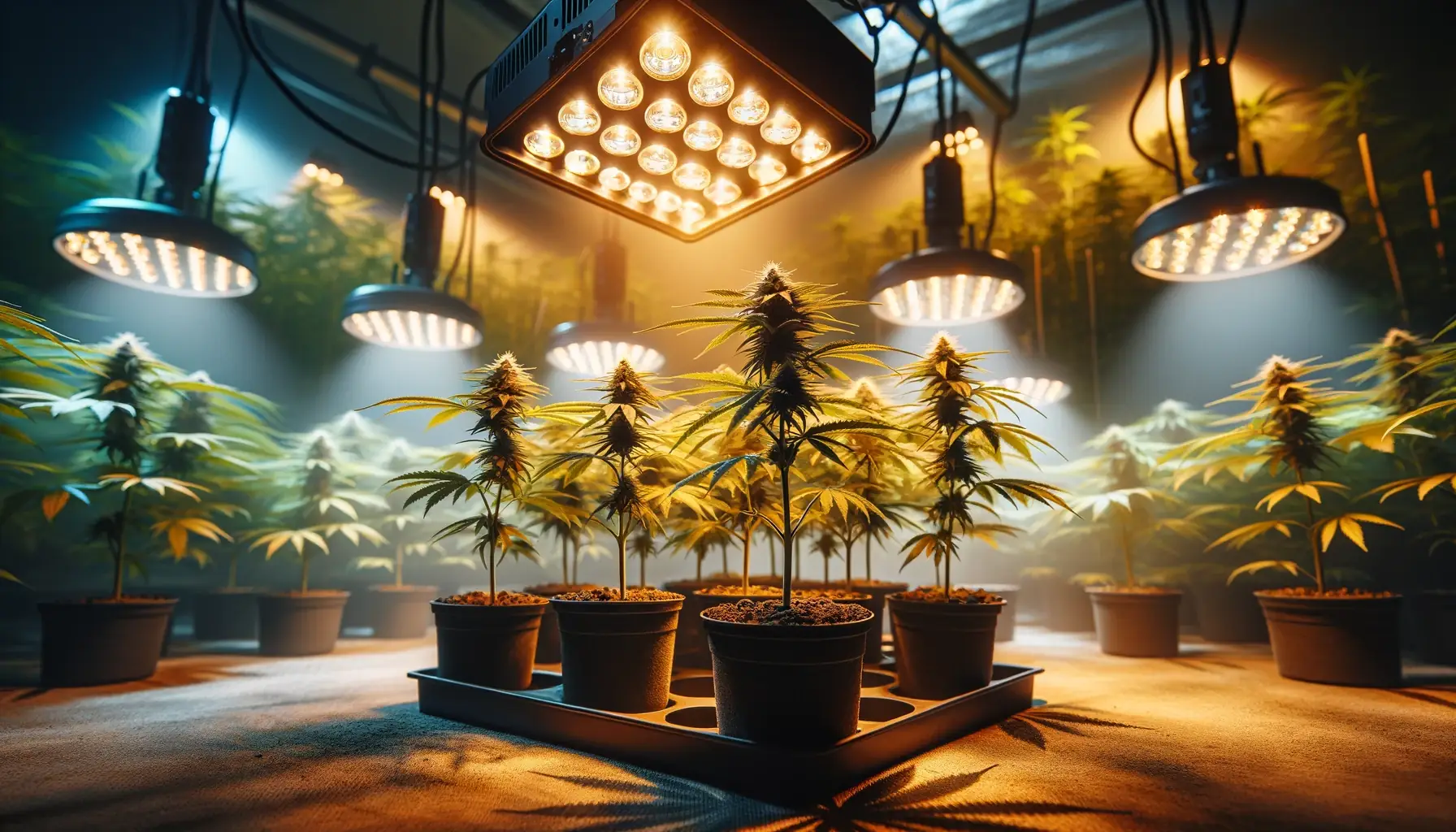
“Water is life.” But, How Much Water Do Cannabis Seedlings Need?
Proper watering is crucial for the healthy development of cannabis seedlings. However, it is important to strike a balance and avoid overwatering or underwatering the plants. To optimize your cannabis grow, consider the following factors:
watering frequency, amount, and drainage.
- 1. Watering Frequency:
Cannabis seedlings have delicate root systems that are prone to root rot if constantly saturated with water. It is important to allow the top layer of the soil to dry out slightly between waterings. As a general rule of thumb, water the seedlings when the top inch (2.5 cm) of soil feels dry to the touch. This helps prevent waterlogged conditions and promotes healthy root development. - 2. Watering Amount:
When watering cannabis seedlings, aim for a gentle and thorough watering. Ensure that the water reaches the entire root zone without excessive runoff. It is important to provide enough water to thoroughly moisten the soil but avoid creating standing water. Overwatering can lead to oxygen deprivation in the root zone and hinder the seedlings’ growth. On the other hand, underwatering can cause the plants to become stressed and stunted. Adjust the amount of water according to the size of the container and the moisture retention properties of the soil. - 3. Drainage:
Proper drainage is essential to prevent waterlogging and root rot. Ensure that the containers have drainage holes to allow excess water to escape. If using a tray or saucer underneath the pots, make sure to empty any standing water after each watering. Additionally, consider using well-draining soil mixtures that allow excess water to flow through easily. This helps maintain a healthy balance of moisture in the root zone.

The Humidity Factor: Are Your Cannabis Seedlings Breathing Comfortably?
Maintaining the proper humidity levels is essential for the healthy growth of cannabis seedlings. The ideal humidity range for seedlings is between 50% and 70%. This level of humidity helps the seedlings to absorb water and nutrients effectively through their leaves while also preventing excessive transpiration.
Low humidity levels can lead to dehydration and stress in cannabis seedlings. When the air is too dry, the plants lose moisture rapidly, which can hinder their growth and development. To increase humidity, you can use a humidifier or place trays of water near the seedlings to increase the moisture in the air. Another option is to mist the seedlings with water using a spray bottle, but be careful not to wet the leaves excessively, as this can lead to fungal diseases.
On the other hand, high humidity levels can create a conducive environment for mold and mildew growth. Excess moisture on the leaves and in the growing area can lead to fungal diseases that can damage or even kill the seedlings. To decrease humidity, you can use a dehumidifier or improve air circulation by using fans. It is also important to avoid overcrowding the seedlings, as this can trap moisture and increase humidity levels.
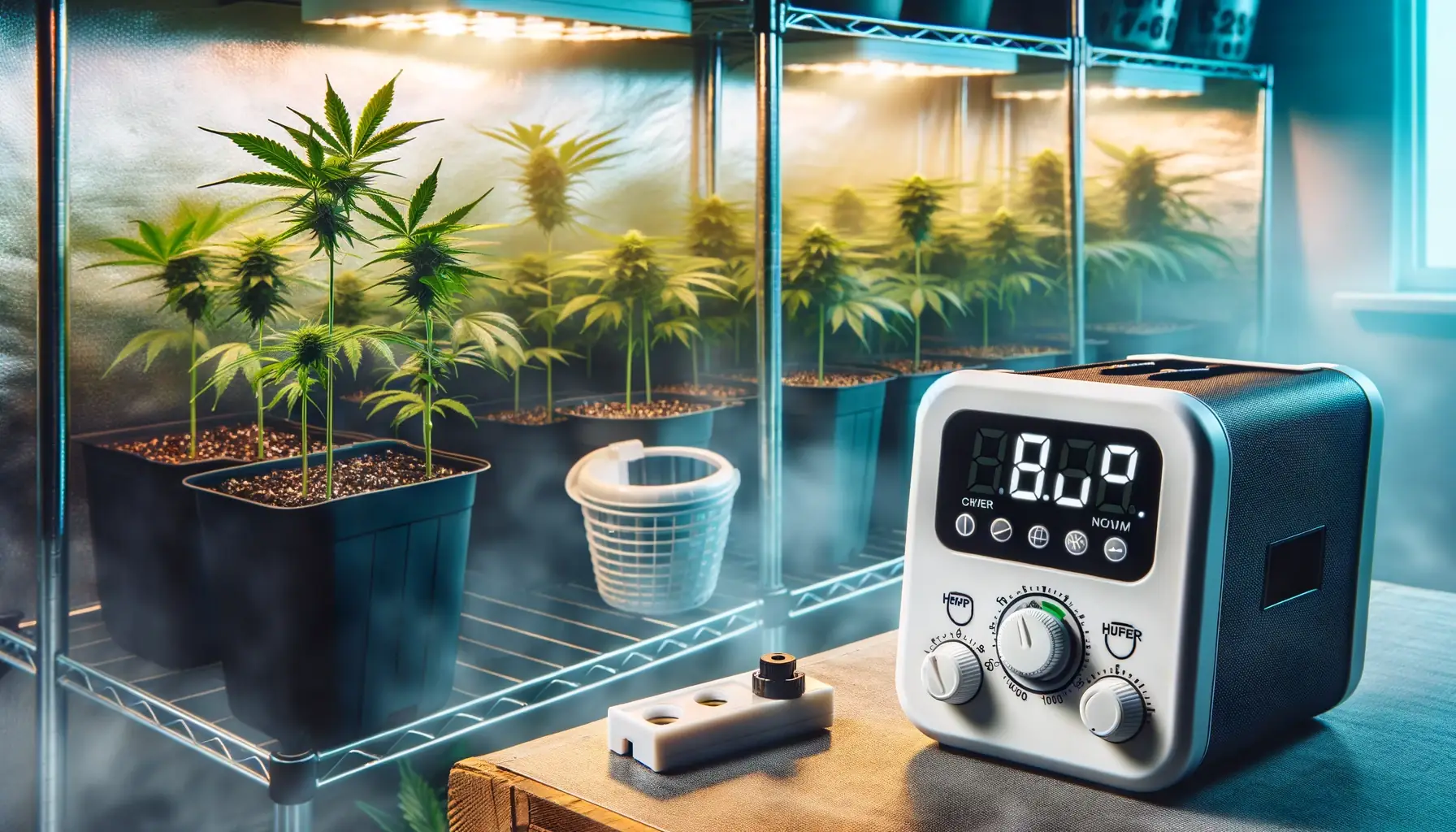
The Role of Soil: Is Your Medium Helping Your Seedlings Grow?
Choosing the right soil medium is crucial for the optimal growth of cannabis seedlings. The soil provides essential nutrients, water retention, and proper aeration for the roots. Here are three key factors to consider when evaluating the role of soil in helping your seedlings grow:
- 1. Nutrient Composition:
A nutrient-rich soil is vital for healthy cannabis seedlings. Look for a soil medium that contains a balanced mix of macro and micronutrients, such as nitrogen, phosphorus, and potassium. These nutrients are essential for the seedlings’ early growth and development. Additionally, consider using organic fertilizers or compost to enhance the nutrient content of the soil. - 2. Water Retention:
Adequate water retention is essential to ensure that your cannabis seedlings receive consistent moisture. The soil should be able to retain water without becoming overly saturated, as this can lead to root rot and other issues. Opt for a well-draining soil that allows excess water to drain away while retaining enough moisture for the roots to absorb. Adding perlite or vermiculite to the soil mix can improve drainage and prevent waterlogging. - 3. Aeration and Root Health:
Proper aeration is crucial for the seedlings’ root health and overall growth. The soil should have good porosity and allow for sufficient airflow to the roots. This ensures that the roots receive enough oxygen, which is essential for nutrient uptake and growth. To improve aeration, consider adding organic matter, like compost or coconut coir, to the soil mix. These amendments can enhance soil structure, promote root development, and increase the soil’s water-holding capacity.Regularly monitor the condition of the soil and make necessary adjustments as needed. Check the pH levels to ensure they are within the optimal range for cannabis seedlings, typically around 6.0 to 6.5. Additionally, consider using soil amendments or supplements tailored specifically for cannabis cultivation to provide additional nutrients and support healthy growth.
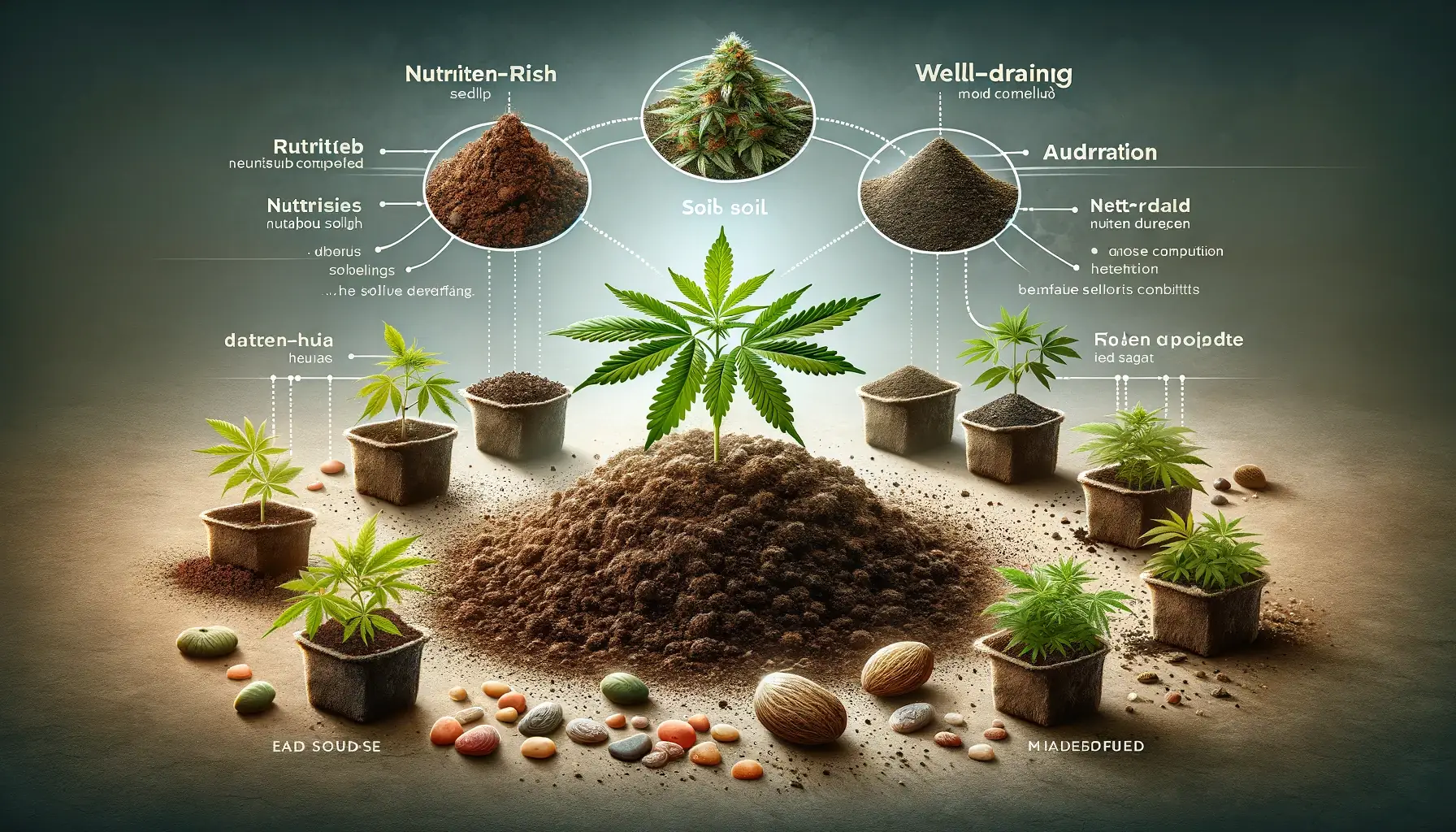
Monitoring and Adjustment: Are Your Seedlings Happy?
To ensure the success of your cannabis seedlings, it is crucial to monitor their progress regularly and make necessary adjustments along the way. Here are some key aspects to consider when assessing the health and happiness of your seedlings:
- 1. Visual Inspection:
Take the time to visually inspect your seedlings on a daily basis. Look for any signs of stress or nutrient deficiencies, such as yellowing leaves, stunted growth, or discoloration. Identifying and addressing these issues early on can prevent further damage and promote healthy growth. - 2. Environmental Conditions:
Continuously monitor the environmental conditions in your growing space. Check the temperature, humidity levels, and air flow regularly. Ensure that the temperature remains within the optimal range for cannabis seedlings, typically between 70°F and 80°F. Maintain a humidity level of around 60% to 70% during the early stages, gradually decreasing as the plants mature. Adjust the airflow and ventilation as needed to prevent stagnant air and promote healthy transpiration. - 3. Watering Schedule:
Pay close attention to your watering schedule. Overwatering or underwatering can lead to stress and root issues. Ensure that the soil is moist but not saturated. Stick your finger into the soil about an inch deep to determine if it’s time to water. If it feels dry, it’s time to water, but if it feels damp, hold off for a bit longer. Adjust your watering frequency based on the moisture needs of your seedlings. - 4. Nutrient Management:
Keep track of the nutrient requirements of your seedlings throughout their growth stages. Use a pH meter to monitor the pH level of the soil or growing medium and adjust it if necessary. Follow a feeding schedule that provides the appropriate nutrients at each stage of growth. Be mindful of any signs of nutrient burn or deficiencies and make adjustments accordingly.
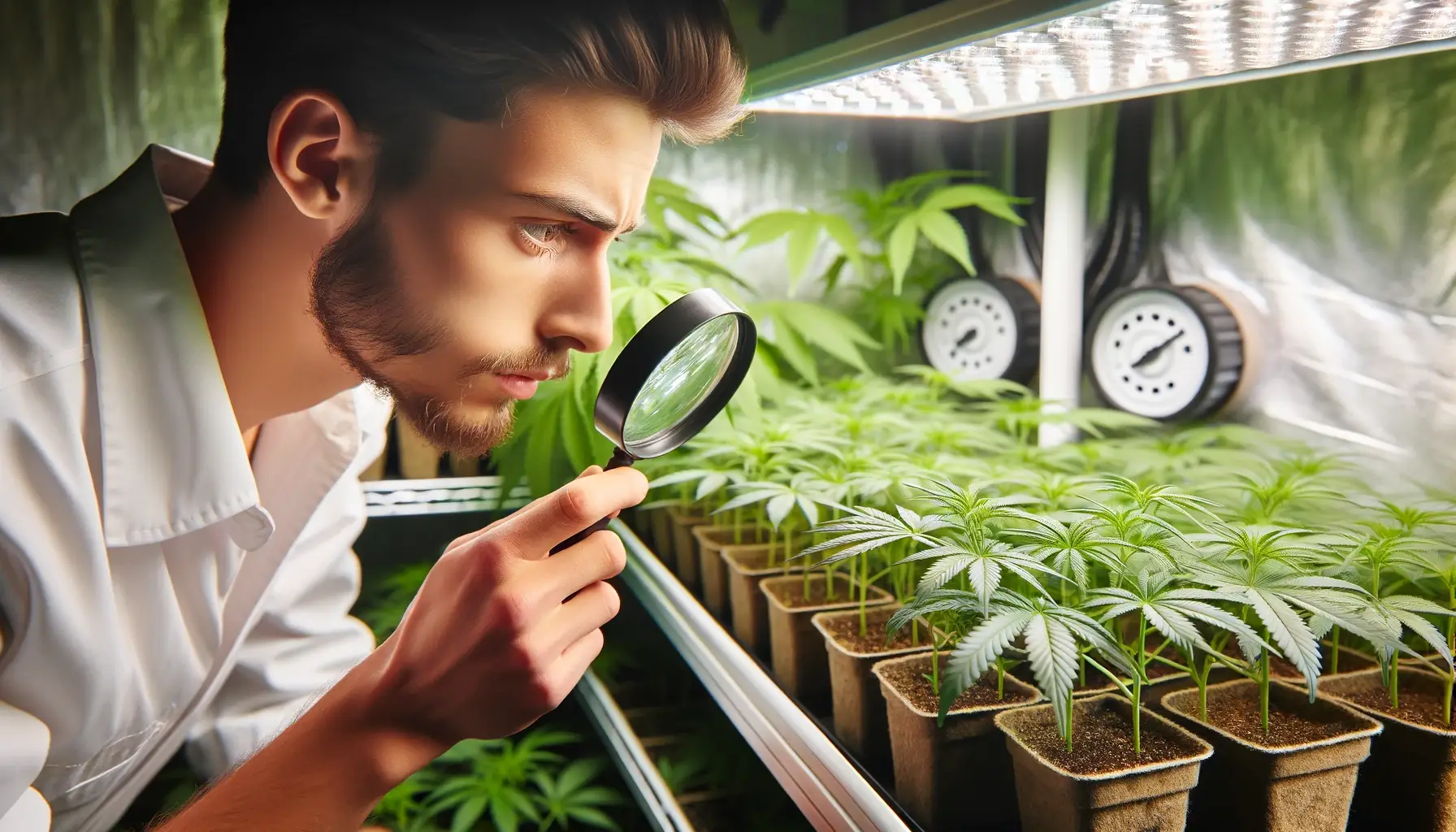
Optimal Conditions for Cannabis Seedlings:
| Conditions | Optimum Range | Optimum Temperature | Humidity Level |
|---|---|---|---|
| Light | 18-24 hrs | 21-27°C | 50-70% |
| Soil | Well-draining | 22-25°C | 50-70% |
| Water | Regularly | Room Temp | NA |
| NPK Balanced | Moderately | NA | NA |
Establishing the optimal conditions for cannabis seedlings is pivotal in cannabis growth optimization. By understanding the importance of temperature, light, humidity, water, and soil quality, along with proper handling and monitoring, growers can significantly enhance the growth and overall yield of their cannabis plants. With continuous learning and adjustments based on the seedling’s response, one can master the art of cannabis cultivation.




